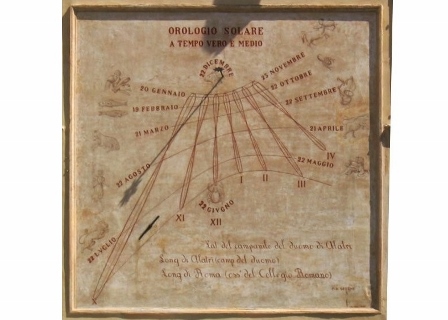
 Umberto Mucci
Umberto Mucci
Italian language: Exploring the Way Time has been Named - The Months and their Meanings
- WTI Magazine #75 Jan 17, 2016
-

 Umberto Mucci
Umberto Mucci
WTI Magazine #75 2016 January 18
Author : Giosuè Prezioso Translation by:
Interestingly, Italian shares the etymology of its months with most of the European languages. Gennaio (January), Febbraio (February), Marzo (March), and so on are common to all the Latin languages, but also, to others. The word for "March", for instance, is the same in German (Märs), Swedish (Mars), Hungarian (Március), and even Arabic, where the graphems مارس, are surprisingly read "Māris". Through months and time, Italian is a la page with some of the most important languages in the world.
And, drawing from Latin, it becomes one of the main perpetuators of a scheme which is common to millions and millions, probably billions. But what does "Gennaio" (January) or "Febbraio" (February) or "Luglio" (July) actually mean?
The etymology of the months is still debated. However, there are common agreed versions which propose the following theories:
- The word "Gennaio" (January), coming from the Latin "Januarius" draws from "Janus", who was the Roman god of beginnings, transitions and ends. For this reason, it was usually represented having two faces, respectively looking at the past and the future. Hence, being the God of beginnings, doors, gates, and initiations, Janus became the god after whom "Gennaio" (January) was called;
- "Febbraio" (February) seems to draw from the name of the Roman god of purification Februus, or, may be, from the februa, the Roman festivals of purification celebrated during this month;
- For the Romans, "Marzo" (March) was the first month of the calendar, as January and February were just introduced later on by the legendary King Numa Pompilius. "March" comes from the Latin name of the Roman god of war Mars, who, apparently, protected the soldiers during the war-campaigns (presumably) taking place in this period of the year;
- The etymology of "Aprile" (April) is uncertain. It probably comes from the verb aperire, meaning "to open", referring, probably, to the opening of the buds;
- The word for "Maggio" (May) probably refers to "Maiesta" or "Maia", the Roman goddess of growth and abundance. Her name was close to the comparative Latin forms maius and maior, meaning "bigger" and "larger" emphasizing the characteristics of this month, which is particularly generous and fertile;
- "Giugno" (June) was called after the goddess "Juno", Zeus' wife and protector of marriage and birth;
- Originally called Quintilis, and meaning "five", "the fifth", "Luglio" (July) was called after Julius Caesar, the Roman emperor and dictator who died in 44 BCE because of an assassination;
- Sixth month of the year (originally called Sextus or Sextilis, meaning six, the sixth), "Agosto" (August) gets its name from Augustus, the powerful emperor that, according to some, won important battles in this specific segment of the year;
- Following the scheme of the Roman calendar, "Settembre" (September) is the seventh month, "septem" (seven) in Latin;
- On the same line of September, "Ottobre" (October) comes from octo, meaning "eight" in Latin;
- "Novembre" (November) and then "Dicembre" (December) clearly mean "the ninth" (from novem) and "the tenth" (from decem), closing the annual cycle.
But then, what does "mese" (month) mean? The English word "mese" and the Latin version mensem are cognates, meaning that both originate from the same word: "moon". The division of time, in fact, had strict connections with the Moon, the main goddess of time. However, also German, Swedish, and many other languages draw from "Moon" to create the word "Month", having a special case in Rumenian, where "Moon" and "Month" are still the same word: "lună".
From Rome to Berlin, to Moscow and Bucharest, the list of months dividing our time makes us speak the same language: time solves Babel.